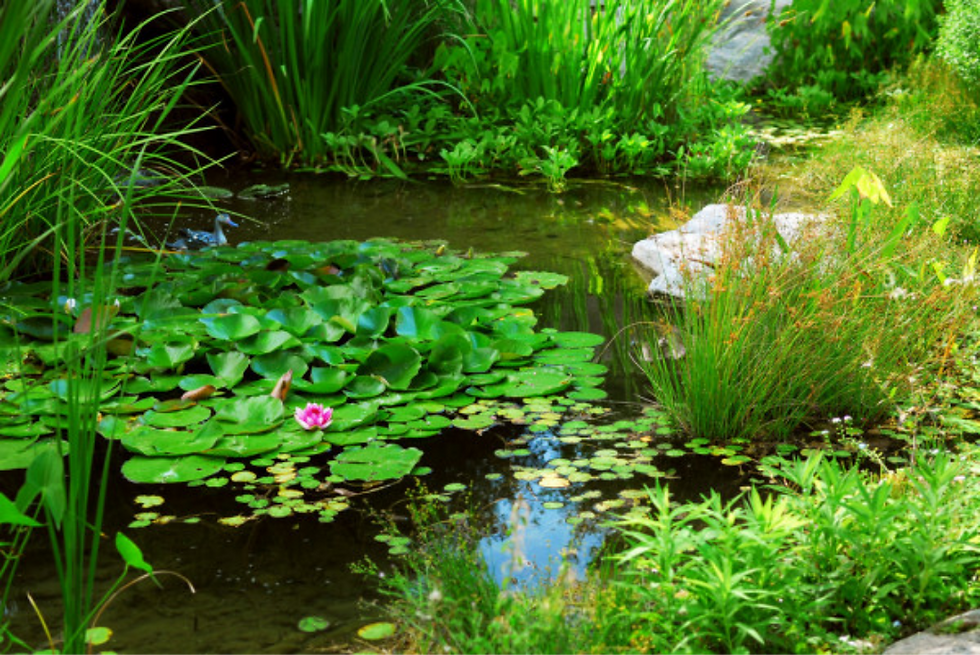A Complete Guide to Pond Filtration:
- Josh Harvey
- Apr 14, 2021
- 3 min read
This article will teach you about the different types of filtration systems for your pond, with our particular recommendations depending upon your circumstance and other factors. Keep reading for industry insights about the different types of filtration that you won’t find anywhere else!
If you are already familiar with the different types of pond filtration, click HERE for our article with recommendations of Pond Filters. It provides you with reviews of the best brands and models of filters currently available for both fish and natural ponds.
All-in-One Filter Systems:
All-in-One filter systems are very simply to understand. They are simply a box that will include a porous, biological media, an Ultra-Violet light system and mechanic filtration, all in one simply box that you can throw in your pond.
They are not effective at dealing with massive bio loads, making them better suited to smaller fish ponds or both small and large natural ponds.
If you are looking to add fish to a pond these are the cheapest way to fulfil that; alternatively, you may just be looking to improve water clarity in your nature pond. Regardless, they are a fantastic, cost-effective, way to add filtration to your pond.
Pressurised, External Canister Systems:
Pressurised Canisters offer a slightly different way of filtering your ponds water. They can support much higher bio-loads, making them the perfect option for larger fish ponds looking to house fish such as Koi/Carp species more generally. They involve having a filter pump that sits inside the pond. This pumps water to the canister which can sit anywhere externally from the pond and, after passing through the different filter media, the water is pumped back into the pond. The canisters will include: Sponges, Biological Filter Media and an Ultra-Violet light.
The advantage to these systems, over an All-in-One unit, is that they can hold a lot more filter media without taking up much space in your pond. They are generally easier to maintain, longer-lasting and more effective than their alternatives. That being said, they typically cost more and will use more power, due to the increased volume of water that will be passing through them.
Gravity-Reliant Box Filter Systems:
These are very similar to pressurised canister filters, however they must be placed above the Pond as they rely on gravity for the water to be returned to the pond. They are incredibly effective at dealing with large bio loads, such as those created by Koi/Carp species more generally and are typically incredibly easy to maintain.
They still rely on a pump being placed inside the pond to pump to the box. These filters are usually found on older style ponds or on much larger volumes of water, typically 20,000 litres and above. This is because the boxes can hold a much larger amount of filter media, compared to a canister.
Generally their price is slightly cheaper than a comparative canister however they can be found in much larger sizes, but this will, of course, incur a linear price increase.
Self-Cleaning Box Filter Systems:
These are our personal favourites out of all the filter systems we recommend. They are not recommended for budget Pond Systems. Despite an expensive price tag, they are the only system that will allow you a self-cleaning, 0 maintenance, pond filter. This is perfect for those of you who are perhaps away from home a lot of the time or just not wanting to have to be hands on with your pond filter!
There are different styles of self-cleaning filter systems but generally they will involve a physical filter that will remove waste from the pond. This will then be rinsed off with a jet of water, taken from the pond, and flushed through a waste pipe. The water will then be replaced by an auto-top-up unit, run usually by a float valve.
They are very simply systems and are incredibly effective at filtering incredibly large volumes of water and fish bio loads. They can be customised so you can choose how often the filter is cleaned, this will depend entirely upon the volume of water, desired clarity and fish bio-load.
We hope you have found this review useful and, for any more specific information about the different makes and models within each category, see the hyperlinked articles within each.

Comentários